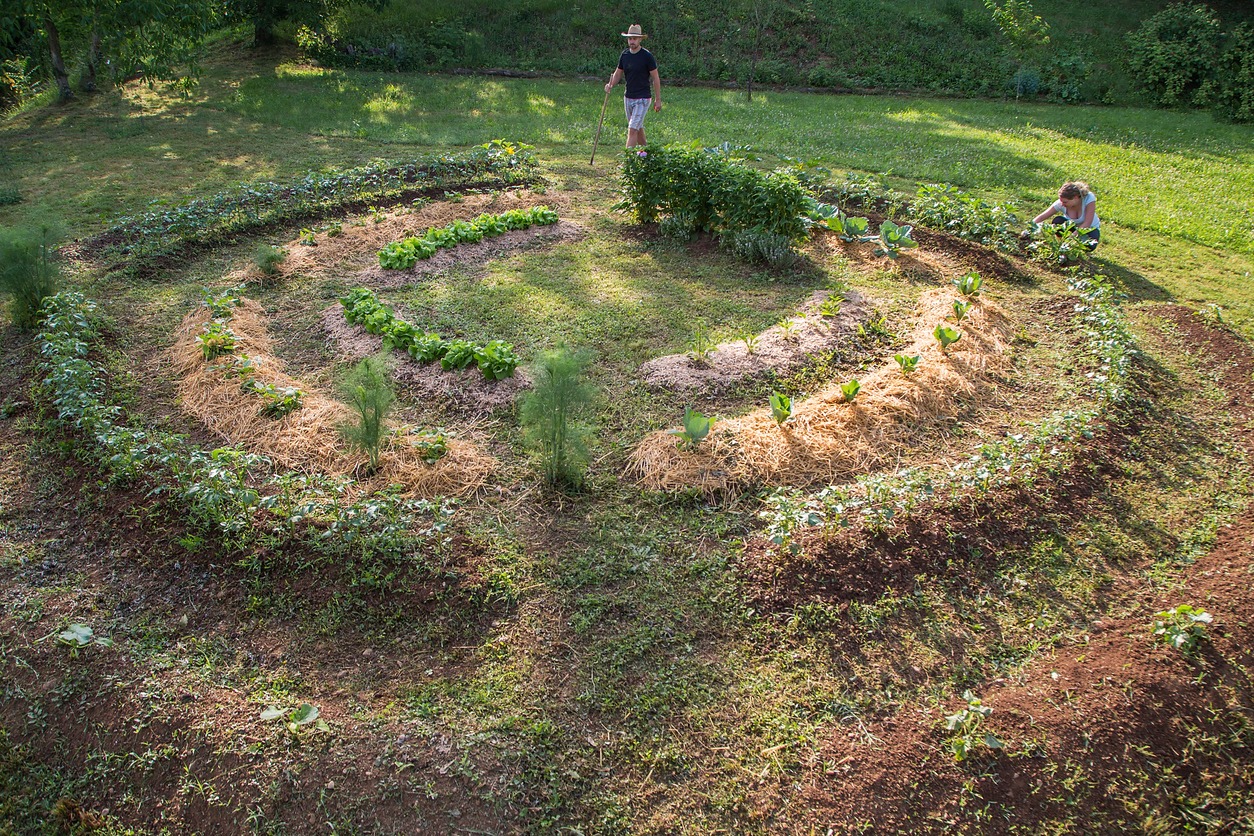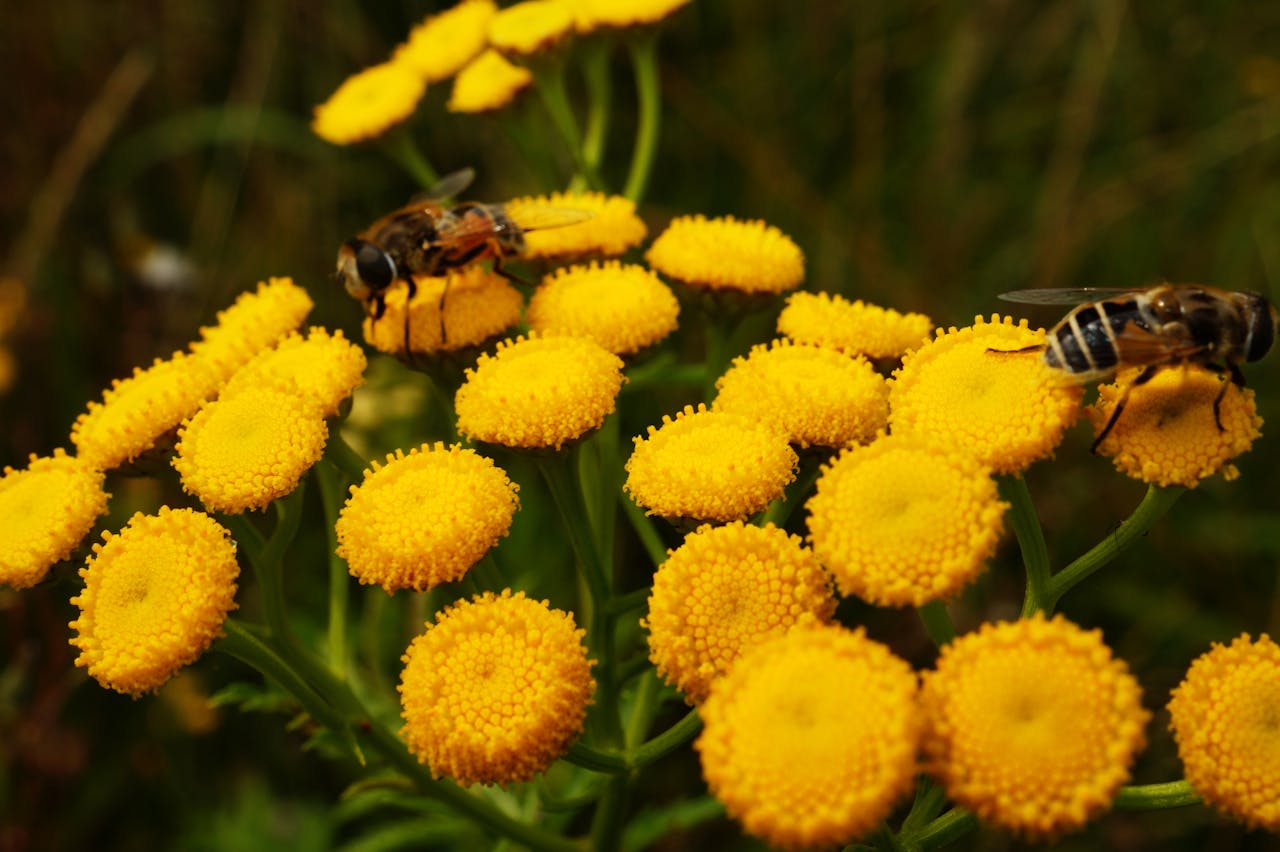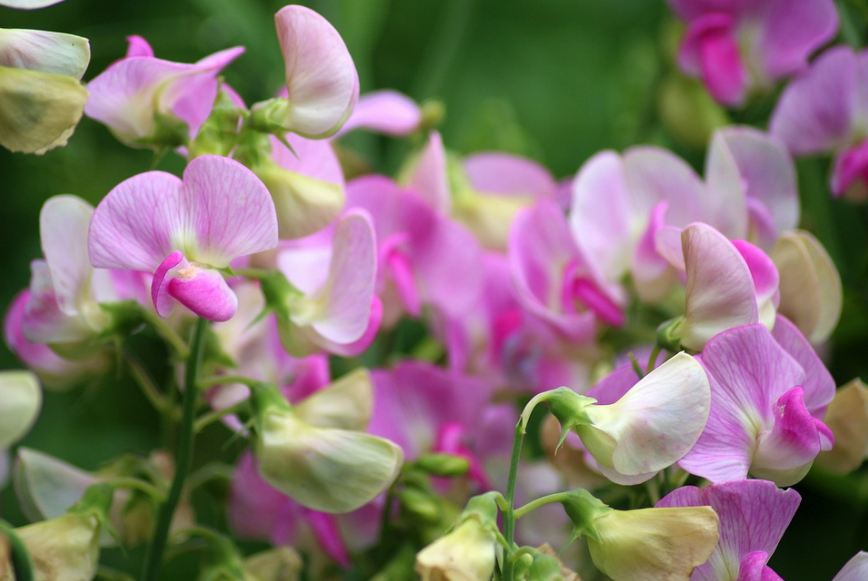Choosing the Best Ground Cover Plants for a Low-Maintenance Homestead Landscape
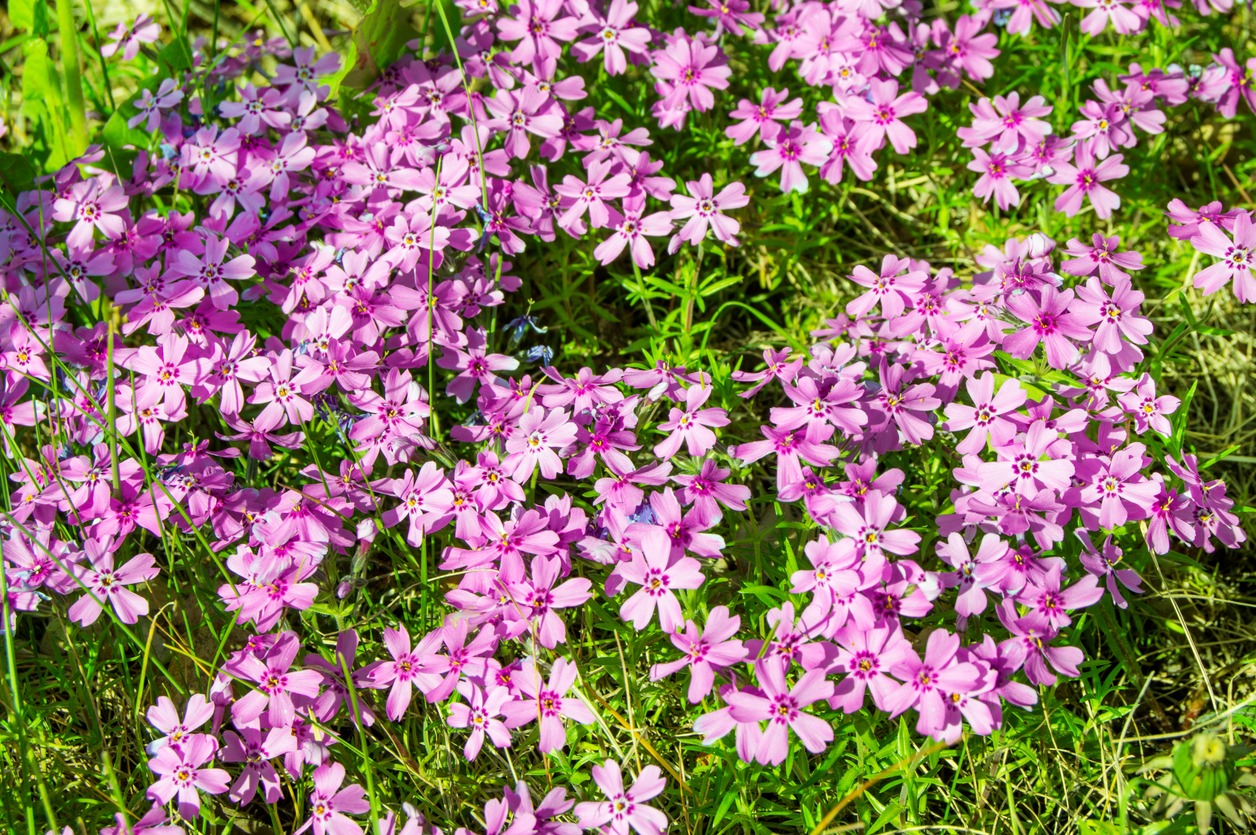
Ground cover plants add both beauty and function to your homestead landscape, keeping maintenance low while providing year-round resilience. The right ground covers can stabilize soil, reduce upkeep, and create an attractive, thriving environment. So, whether you’re filling a sunny spot, covering a shaded area, or managing a slope, this guide will help you choose the best ground cover plants for a low-maintenance homestead.
Understanding Ground Cover Plants
Ground cover plants are low-growing plants that spread across the ground, creating a dense, carpet-like layer that covers bare soil. Beyond aesthetics, these plants provide essential benefits for homesteads. They help prevent weeds from taking over, protect against soil erosion, and often require less water and maintenance than traditional lawns. A well-chosen ground cover can handle diverse conditions, like drought or heavy shade, making it a versatile solution for almost any part of your landscape.
Ground cover plants can take many forms, from flowering varieties that bring vibrant colors to evergreen types that offer year-round greenery. Some are even hardy enough to withstand light foot traffic, making them ideal for pathways or high-traffic areas.
Benefits of Ground Cover Plants
Ground cover plants are more than just beautiful additions to your landscape—they provide essential functional benefits. Here’s why they’re invaluable to any homestead setting:
- Weed Suppression: These plants form a thick mat over the soil, which blocks sunlight from reaching weed seeds, effectively suppressing unwanted growth. This reduces the time spent on weed control and keeps your landscape looking clean and orderly.
- Erosion Control: Ground covers are excellent for stabilizing soil on slopes or areas prone to runoff. Their roots hold soil in place, preventing erosion, especially during heavy rains. This is essential for maintaining healthy, fertile ground on your homestead.
- Improved Soil Health: As ground cover plants grow, shed leaves, and decompose, they add organic matter to the soil. This natural cycle improves soil structure, aeration, and fertility, benefiting the entire ecosystem.
- Water Conservation: Many ground cover plants are drought-tolerant, reducing the need for constant watering. This is ideal for creating a water-wise landscape that thrives on its own.
With these benefits in mind, let's explore some of the best ground cover plants for different parts of a homestead.
Selecting the Right Ground Cover for Your Needs
The first step to choosing the best ground cover plants is to assess your landscape’s specific needs. Consider soil type, sunlight exposure, and climate. Then, match your selections to these factors to ensure success. Let’s look at some popular ground covers suited to different conditions.
1. Sun-Loving Ground Cover Options
If your homestead has areas with full sun exposure, there are plenty of ground covers that not only tolerate but thrive in bright, open spaces:
- Drift Roses: With their beautiful blooms and sweet fragrance, drift roses are a favorite for sunny spots. They’re also drought-tolerant and low-growing, spreading across the ground to form a vibrant mat that adds charm to any homestead.
- Creeping Phlox: This plant is a go-to for a spring burst of color, forming a dense carpet of blooms in pink, purple, or white. Creeping Phlox tolerates full sun well and adds a lively touch to sunny sections of your garden.
- Dianthus: Known for its vanilla-like scent, Dianthus produces beautiful, dense clusters of flowers. It’s well-suited to sunny areas and tolerates drought, making it a pleasant addition for both appearance and fragrance.
- Sedum Coral Carpet: This hardy succulent is ideal for areas with poor soil or hot, sunny conditions. Its rich green foliage turns a beautiful shade of red in the fall, adding seasonal interest to your landscape.
- Hens and Chicks: Perfect for rock gardens or tricky sunny spots, Hens and Chicks are drought-tolerant succulents that spread over time and require almost no care. Their rosette shapes create an eye-catching, textured ground cover.
By choosing sun-loving ground covers, you create a landscape that’s not only beautiful but also well-suited to withstand bright and dry conditions.
2. Shade-Tolerant Ground Cover Choices
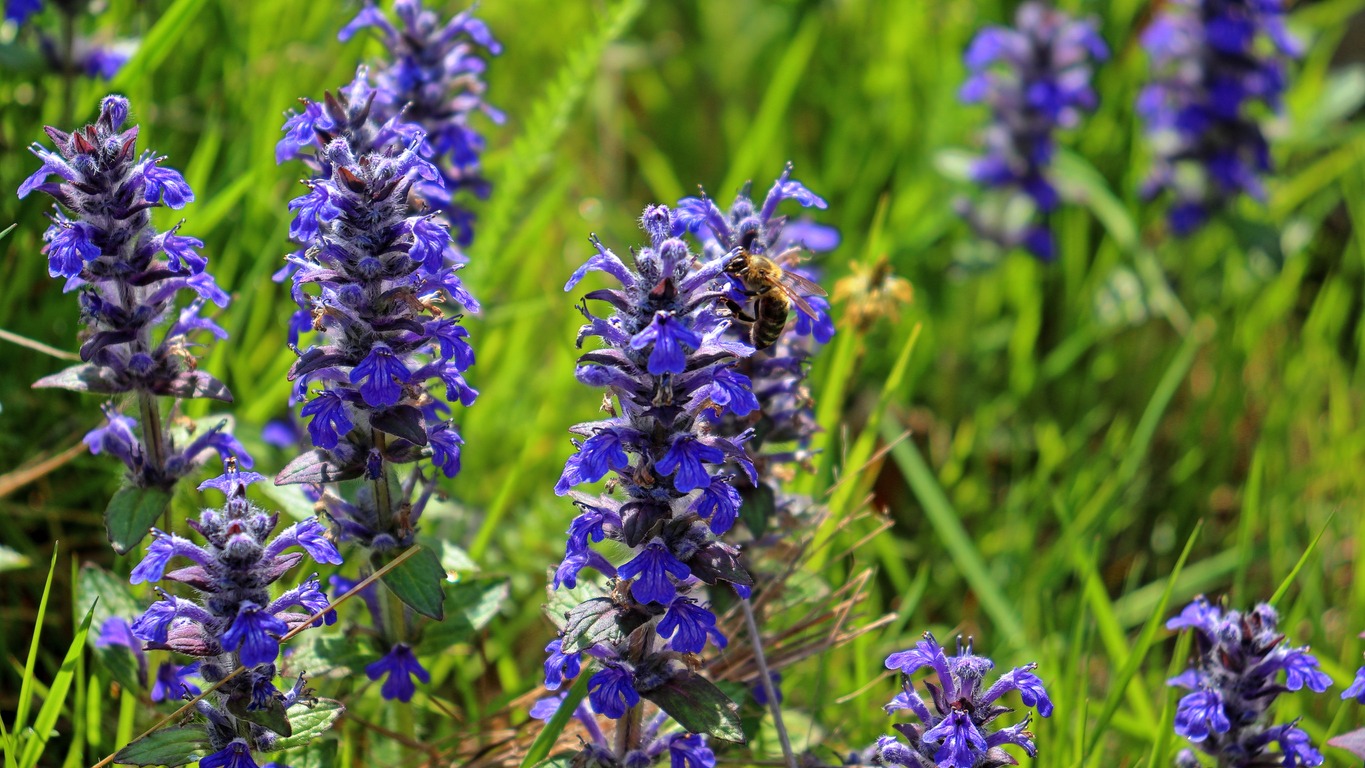
Dealing with shady spots? There are plenty of ground cover plants that flourish without direct sunlight, making them ideal for areas under trees or near structures.
- Lilyturf (Liriope muscari): Lilyturf is a clumping, grass-like plant that adds texture to shaded areas. Its minimal upkeep requirements make it a homestead favorite.
- Pachysandra (Japanese Spurge): This evergreen ground cover is perfect for shaded spots. It grows quickly, forming a dense mat that suppresses weeds and is ideal for both partial and full shade.
- Common Periwinkle (Vinca Minor): With glossy leaves and small blue flowers, Vinca Minor brightens up shaded spaces. This fast-spreading ground cover is excellent for controlling weeds in shady areas.
- Bugleweed (Ajuga Reptans): Bugleweed offers low-growing, mat-forming foliage in shades of bronze or purple, adding a unique color contrast to shaded zones.
- Spotted Dead Nettle (Lamium maculatum): Lamium has variegated leaves and small, colorful flowers that add charm to any shaded area. It’s a low-maintenance choice that spreads well and requires minimal care.
These shade-tolerant ground covers offer diverse options to add color, texture, and functionality to your homestead’s shaded spots.
3. Drought-Resistant Ground Cover Plants
In areas with full sun and minimal rainfall, drought-resistant ground covers can save water while still enhancing your landscape:
- Sedum ‘Blue Spruce’: This hardy succulent has blue-gray foliage that stores water, making it perfect for dry, sunny conditions. It spreads easily, forming a dense mat that’s both drought-resistant and low-maintenance.
- Creeping Thyme: Known for its pleasant fragrance, creeping thyme is a resilient ground cover that handles foot traffic well. Once established, it needs minimal water, making it an ideal choice for dry areas.
- Delosperma (Ice Plant): Delosperma produces vivid, daisy-like flowers and thrives in drought conditions. Its colorful blooms add a lively touch to sunny, dry spots.
- Silver Carpet (Dymondia margaretae): This ground cover has silver-gray foliage and forms a dense, low-maintenance mat that’s drought-resistant once established.
- Moss Rose (Portulaca): Moss rose is a colorful, spreading plant that tolerates extreme heat and drought. Its bright flowers add a cheerful note to any dry spot.
Choosing drought-resistant ground covers helps create a sustainable landscape that conserves water while looking vibrant and healthy.
4. Ground Cover for Slopes
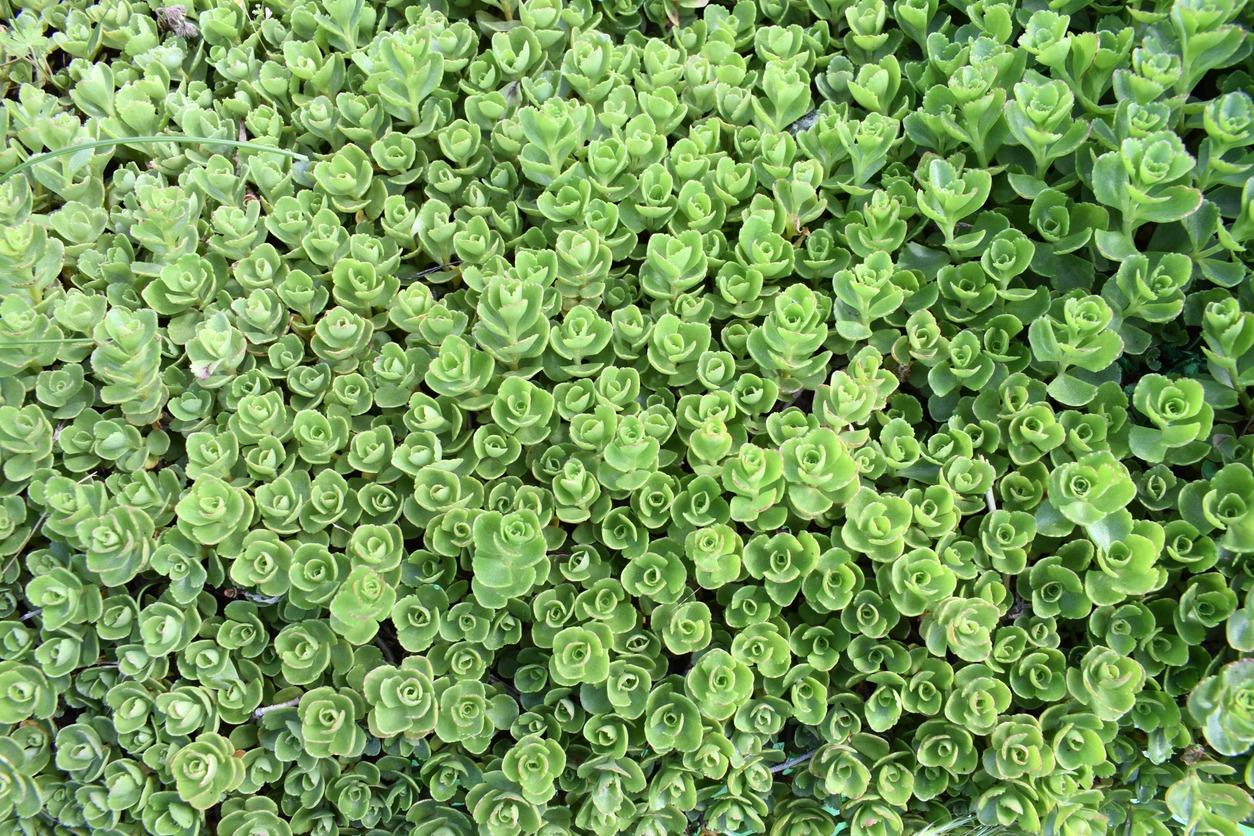
Slopes can be challenging to the landscape due to erosion. Ground covers with strong root systems are essential to stabilize the soil and prevent washouts:
- Pacific Juniper: With its deep roots, Pacific Juniper is ideal for slopes, helping to anchor soil and reduce erosion. It spreads easily and requires very little care once established.
- Drift Roses: In addition to their beauty, drift roses are sturdy and form a thick mat that stabilizes sloped areas, providing both erosion control and color.
- Creeping Phlox: This plant is an excellent option for slopes, as its spreading nature covers the ground effectively. The flowers bring a burst of spring color to sloping landscapes.
- Sedum species: Hardy and low-maintenance Sedum varieties work well on slopes, particularly in dry conditions. They form a thick, drought-tolerant mat that holds soil in place.
- Pachysandra: For shaded slopes, Pachysandra is a reliable ground cover. It spreads quickly, providing erosion control while tolerating low light.
Using the right plants on slopes helps create a stable, low-maintenance environment that enhances the overall landscape.
5. Low-Growing Grass Alternatives
If you’re seeking alternatives to traditional grass lawns, consider low-growing options that are drought-tolerant and require less mowing:
- Creeping Thyme: This low-maintenance, dense ground cover tolerates foot traffic and rarely needs mowing. It’s ideal for pathways or garden borders.
- Irish Moss: For shady, moist areas, Irish Moss forms a lush, green carpet that stays vibrant year-round, adding a soft, mossy touch to your landscape.
- Creeping Jenny: With its bright green foliage, Creeping Jenny covers large areas quickly. It prefers regular watering and grows well in shaded areas.
- Blue Star Creeper: This plant produces tiny blue flowers in spring and withstands some foot traffic, making it great for shaded paths.
- Sedum varieties: Drought-resistant and low-growing, many Sedum species provide a grass alternative in dry, sunny locations.
These grass alternatives offer lush greenery without the constant upkeep of a traditional lawn.
Planting and Maintenance Tips
Once you’ve chosen your ground cover plants, proper planting and care can make a difference in their success. Before planting, water the plants thoroughly and dig holes that are twice the width of the root ball. Place the root ball slightly above the soil line to prevent pooling around the base. Mulch around each plant to retain moisture and suppress weeds. Water regularly until the plants are established; most ground covers become drought-tolerant afterward.
For fast-spreading varieties, occasional pruning or containment may be necessary to keep them from encroaching on other areas. By following these simple steps, you’ll create a thriving ground cover landscape that needs minimal ongoing care.
Native Ground Cover Species
Using native ground cover species is a great way to achieve a low-maintenance, ecologically friendly landscape. Native plants are adapted to local conditions, often requiring less water and fertilizer. Consider the following natives:
- Wild Strawberry (Fragaria virginiana): This low-growing plant offers small, edible strawberries and pretty white flowers, making it both attractive and practical.
- Partridgeberry (Mitchella repens): Ideal for shady, moist spots, this evergreen plant adds subtle beauty with small, fragrant flowers.
- Creeping Phlox (Phlox subulata): This colorful native is perfect for sunny areas and provides a springtime burst of color.
- Virginia Creeper (Parthenocissus quinquefolia): Fast-growing and adaptable, Virginia Creeper covers large areas quickly and offers stunning fall color.
Incorporating native species strengthens your homestead’s ecosystem, providing habitat for pollinators and supporting soil health.
Conclusion
Ground cover plants are an incredible resource for any homestead. From erosion control on slopes to water conservation in sunny spots, the right ground cover can make a world of difference. By selecting plants that match your landscape’s conditions, you’ll create a beautiful, low-maintenance environment that thrives year-round with minimal care.

